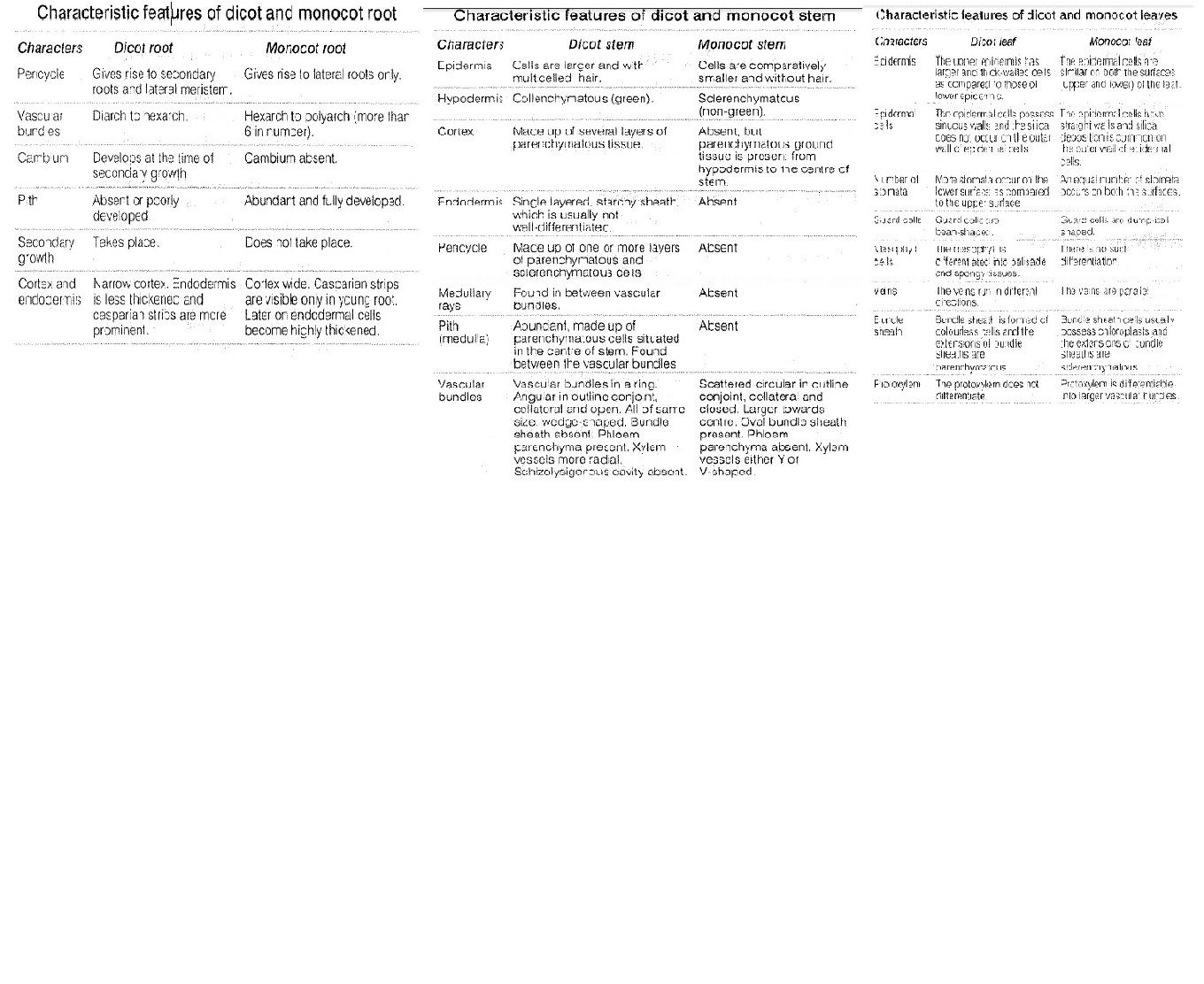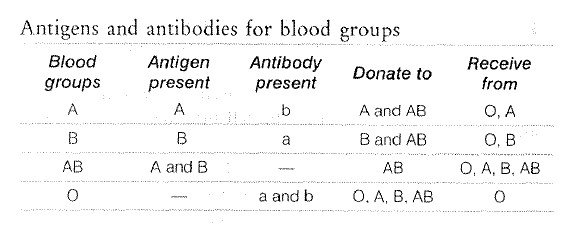(i) Napiform These become very thick at the base and tapers towards the apex, e.g. turnip, sugarbeet, etc.
(ii) Fusiform These roots become thicker in middle and tapers at both the ends, e.g. radish (Raphanus
sativus).
(iii) Conical Swollen at base and narrow at apex,
e.g. carrot.
Modifications of Adventitious Roots
For the Stroage of Food
• Tuberous roots From the nodes of the stem, swollen without any defnite shape, e.g. sweet potato.
• Fasciculated roots Arise in bunches, e.g. Asparagus, Dahlia.
• Nodulose roots Apical portion swells up,
e.g. Curcuma, etc.
• Annular roots Ring structure formed, e.g. Psychotria.
For Support
• Prop or pillar roots Hang from branches and penetrate into soil, e.g. banyan, screwpine.
Stilt or brace roots Develop from lower nodes of stem to give additional support, e.g. maize, sugarcane, etc.
• Climbing roots Arise from nodes and help in climbing, e.g. Pothos, Piper betle.
• Buttress roots Arise from basal part of main stem, e.g. Ficus.
• Contractile roots Underground and fleshy, help the plant in fixation, e.g. onion, corm of Crocus, etc.
For Vital Functions
• Floating roots Arise from nodes, help in floating, e.g.] ussiaea.
• Photosynthetic or assimilatory roots Have chlorophyll, e.g. Trapa, Tinospora.
• Reproductive roots Develop vegetative buds,
e.g. Trichosanthes dioica.
• Mycorrhizal roots With fungal hyphae, e.g. Pinus.
•Thorn roots Serves as protective organ, e.g. Pothos.
Functions of Roots
The functions of roots arc given below
(i) Roots anchor the plant from the substratum and perform very important function of absorption of
water and minerals from the soil.
(ii) Roots hold the soil particles firmly to prevent soil erosion.
(iii) Roots also perform some secondary functions with the help of its modification like food storage,
additional mechanical support, act as haustoria, reproduction and nitrogen-fixation.
(i) Napiform These become very thick at the base and tapers towards the apex, e.g. turnip, sugarbeet, etc.
(ii) Fusiform These roots become thicker in middle and tapers at both the ends, e.g. radish (Raphanus
sativus).
(iii) Conical Swollen at base and narrow at apex,
e.g. carrot.
Modifications of Adventitious Roots
For the Stroage of Food
• Tuberous roots From the nodes of the stem, swollen without any defnite shape, e.g. sweet potato.
• Fasciculated roots Arise in bunches, e.g. Asparagus, Dahlia.
• Nodulose roots Apical portion swells up,
e.g. Curcuma, etc.
• Annular roots Ring structure formed, e.g. Psychotria.
For Support
• Prop or pillar roots Hang from branches and penetrate into soil, e.g. banyan, screwpine.
Stilt or brace roots Develop from lower nodes of stem to give additional support, e.g. maize, sugarcane, etc.
• Climbing roots Arise from nodes and help in climbing, e.g. Pothos, Piper betle.
• Buttress roots Arise from basal part of main stem, e.g. Ficus.
• Contractile roots Underground and fleshy, help the plant in fixation, e.g. onion, corm of Crocus, etc.
For Vital Functions
• Floating roots Arise from nodes, help in floating, e.g.] ussiaea.
• Photosynthetic or assimilatory roots Have chlorophyll, e.g. Trapa, Tinospora.
• Reproductive roots Develop vegetative buds,
e.g. Trichosanthes dioica.
• Mycorrhizal roots With fungal hyphae, e.g. Pinus.
•Thorn roots Serves as protective organ, e.g. Pothos.
Functions of Roots
The functions of roots arc given below
(i) Roots anchor the plant from the substratum and perform very important function of absorption of
water and minerals from the soil.
(ii) Roots hold the soil particles firmly to prevent soil erosion.
(iii) Roots also perform some secondary functions with the help of its modification like food storage,
additional mechanical support, act as haustoria, reproduction and nitrogen-fixation.



